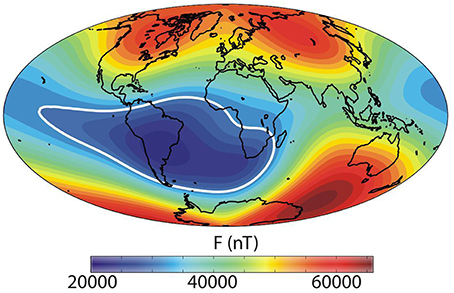Introduction
The mysteries african ocean anomaly that lie beneath the vast expanses of the world’s oceans have fascinated scientists and explorers for centuries. Among these enigmatic phenomena are the ocean anomalies—regions where the sea behaves differently from expectations based on the surrounding waters. One such intriguing mystery is the African Ocean Anomaly. This article delves into the depths of this particular anomaly, exploring its characteristics, impacts, and the significant role it plays in marine and environmental science.
Ocean anomalies are not just curiosities; they are crucial for understanding the dynamic systems of our planet. They can influence everything from local marine life to global climate patterns. The African Ocean Anomaly, a peculiar deviation in sea conditions off the coast of Africa, provides a unique case study. By examining this anomaly, researchers can gain insights into larger oceanographic processes and contribute to broader environmental conservation efforts.
What is the African Ocean Anomaly?
An ocean anomaly refers to a region in the ocean that exhibits physical, chemical, or biological properties that are starkly different from surrounding areas. The African Ocean Anomaly is characterized by unusual temperature gradients, salinity levels, or currents. This anomaly spans a significant portion of the ocean adjacent to Africa, affecting a vast array of marine and atmospheric conditions.
The specific characteristics that define the African Ocean Anomaly include abnormal sea surface temperatures and atypical salinity concentrations. These features not only alter the physical state of the ocean but also affect the marine ecosystems thriving within it. The anomaly’s precise location varies, influenced by shifting ocean currents and seasonal changes, making it a moving target for ongoing research.
Scientific Studies and Discoveries

The discovery of the African Ocean Anomaly dates back several decades when oceanographers first noticed irregular satellite data readings in the region. Initially dismissed as technical glitches, these anomalies were later confirmed through direct oceanographic measurements and deep-sea explorations. Since then, the anomaly has been the focus of numerous scientific studies aiming to unravel its mysteries.
Researchers have employed a range of methodologies to study the anomaly, from deploying floating buoys for real-time data collection to using advanced underwater drones that can dive into the ocean’s depths. These studies have revealed significant deviations in temperature and salinity that may be linked to broader oceanic and climatic phenomena. The data collected has led to several theories about the causes and effects of the anomaly, including its potential relationship with global warming and its impact on marine migration patterns.
Impact on Marine Life and Environment
The African Ocean Anomaly has profound implications for marine life. Changes in water temperature and salinity can dramatically alter the habitat conditions of numerous marine species. For instance, warmer waters may promote the growth of certain algae while inhibiting others, thereby shifting the food web dynamics. Similarly, changes in salinity can affect the buoyancy of water, influencing the distribution of nutrients and oxygen within the water column.
These environmental shifts can lead to larger ecological impacts, such as changes in fish migration routes and breeding grounds, which in turn affect local fishing industries. Moreover, the anomaly could influence global biodiversity hotspots and endangered species, highlighting the need for targeted conservation strategies. The long-term environmental impacts are still being studied, with researchers keen to understand how these changes might affect global oceanic ecosystems.
Technological and Methodological Approaches in Research
Studying the African Ocean Anomaly requires cutting-edge technology. Satellite imagery provides a macroscopic view of temperature and salinity patterns across vast ocean areas. Meanwhile, autonomous underwater vehicles (AUVs) and remotely operated vehicles (ROVs) offer microscopic insights through high-resolution images and direct measurements from within the anomaly itself.
However, deep-sea research faces significant challenges. The harsh conditions and vast depths make it difficult to collect data consistently. Future technological advancements, such as more durable materials for AUVs or more sensitive sensors, could overcome these obstacles. As technology progresses, the potential to gather more accurate and comprehensive data increases, promising deeper insights into the nature of ocean anomalies.
Conclusion
The African Ocean Anomaly represents a fascinating chapter in the study of our planet’s oceans. With each research expedition and technological advancement, we uncover more about this mysterious phenomenon. Continued investigation is essential, not only for the sake of scientific curiosity but also for the practical implications related to marine life conservation, fishing industries, and global climate understanding.
FAQs
What exactly is the African Ocean Anomaly?
It’s a region in the ocean off the coast of Africa where the water properties—such as temperature, salinity, and currents—differ significantly from surrounding areas.
How was the African Ocean Anomaly discovered?
It was initially detected through unusual satellite data readings, which were later confirmed by direct oceanographic research and measurements.
Why is the African Ocean Anomaly important for scientific research?
Studying the anomaly helps scientists understand more about oceanic processes and their impacts on global environmental and climatic patterns.
What technologies are currently used to study the African Ocean Anomaly?
Technologies include satellite imaging, AUVs, ROVs, and various oceanographic measurement tools.
How does the African Ocean Anomaly affect marine life and the surrounding environment?
It can alter marine ecosystems, affect species distribution and breeding, and impact local and global biodiversity.
You May Also Read:https://ventweekly.com/weirdest-jobs/





